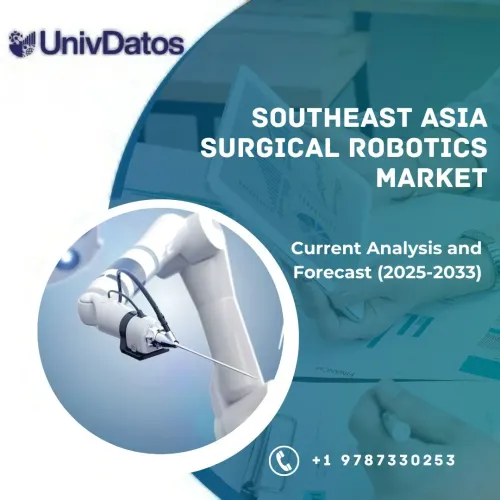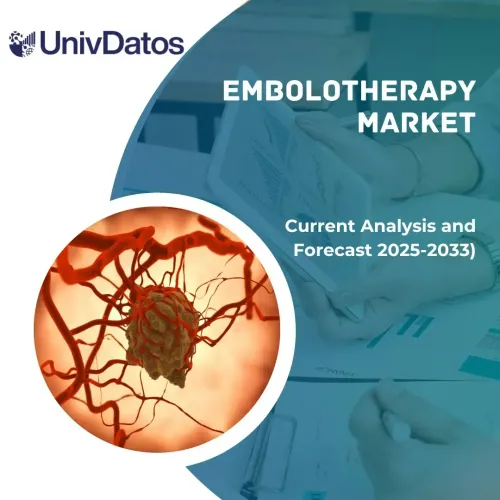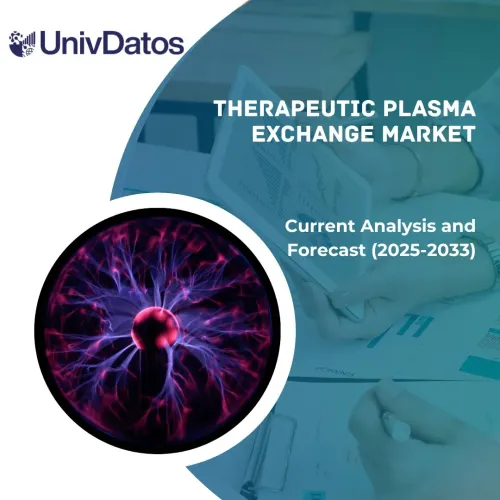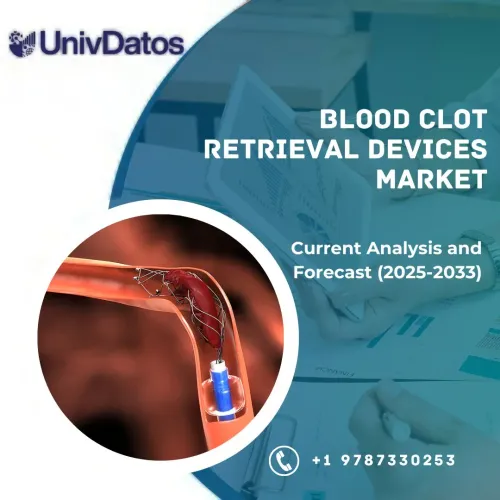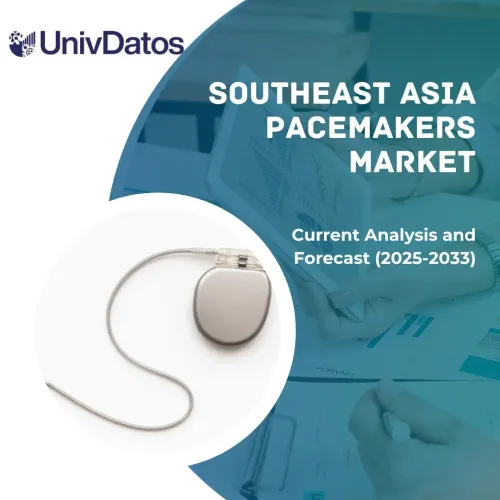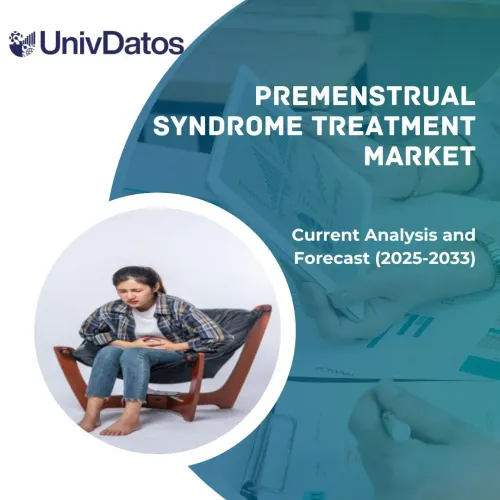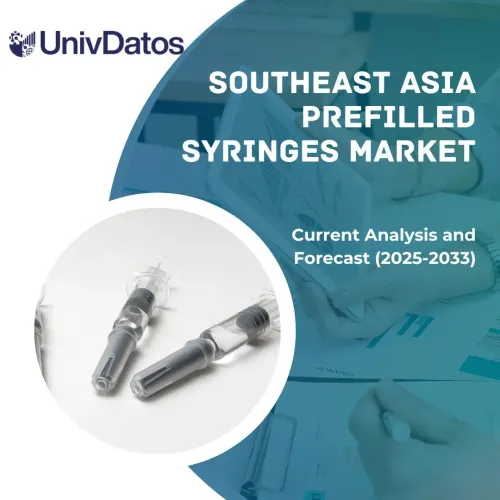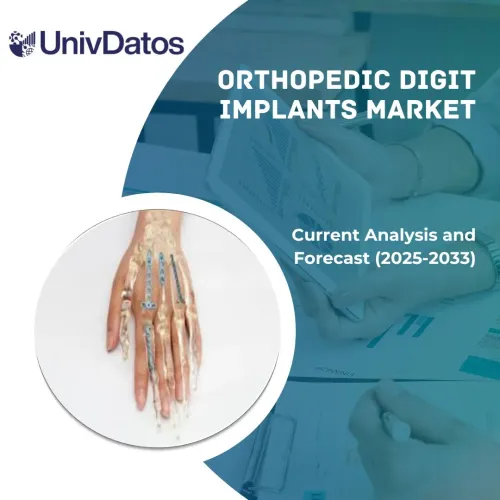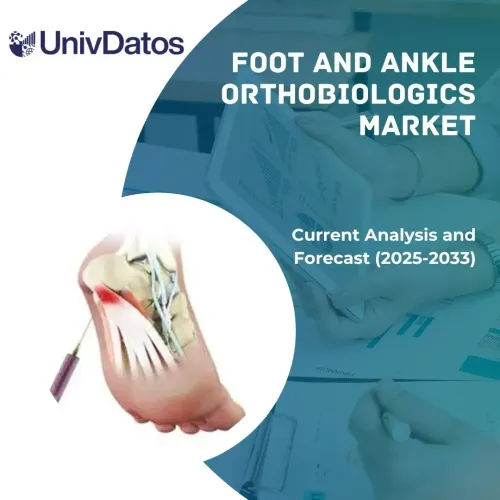- Home
- About Us
- Industry
- Services
- Reading
- Contact Us
Artificial intelligence (AI) in Medical Diagnostics Market: Current Analysis and Forecast (2025-2033)
Emphasis on Component (Software and Services); Application (In-vivo diagnostics and In-vitro diagnostics); End-users (Hospitals, Diagnostic Laboratories & Centers, and Others); Region/Country
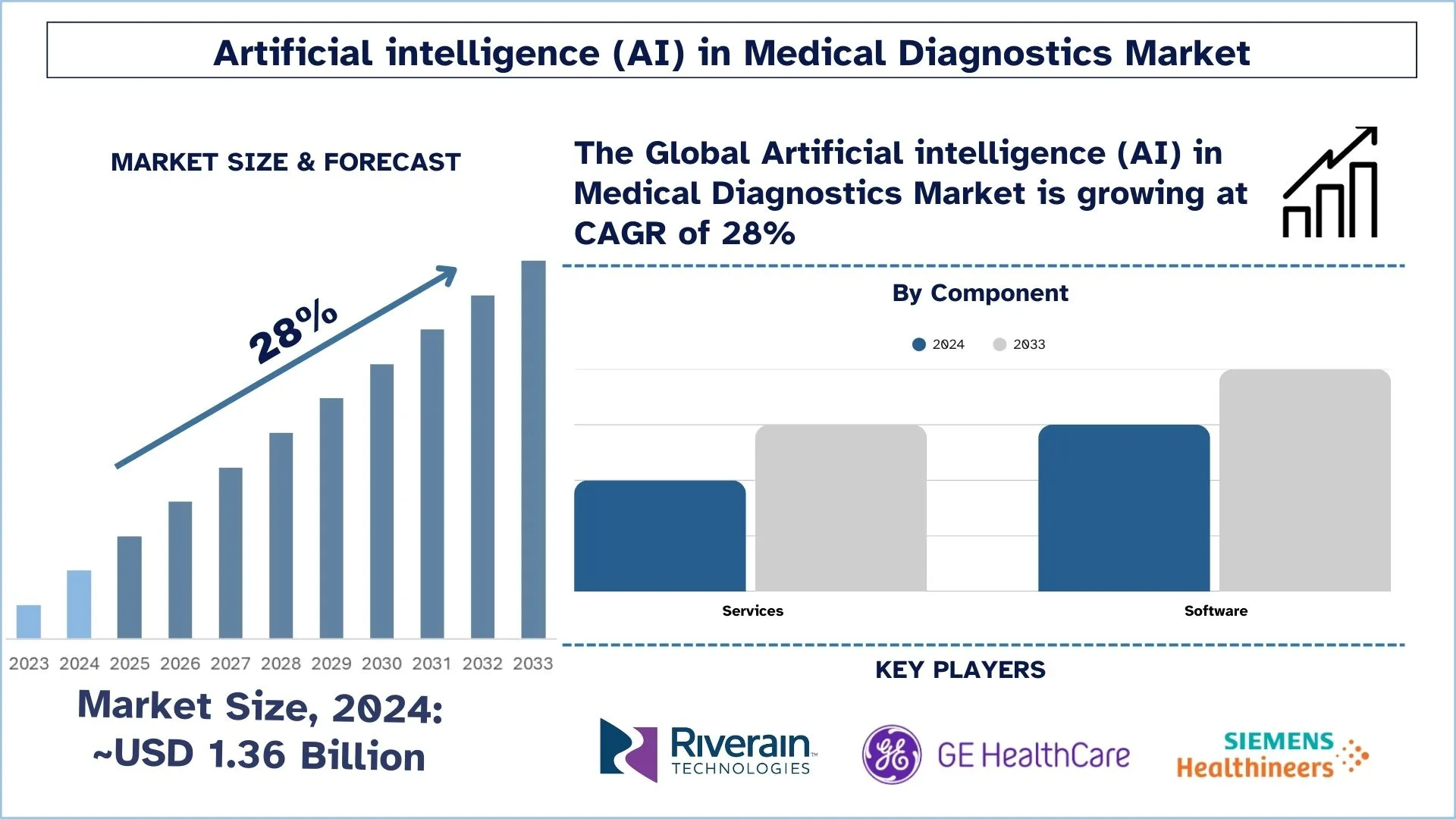
Artificial Intelligence (AI) in Medical Diagnostics Market Size & Forecast
Artificial Intelligence (AI) in the Medical Diagnostics market was valued at approximately USD 1.36 billion in 2024 and is expected to grow at a substantial CAGR of around 28% during the forecast period (2025-2033), owing to the rising prevalence of chronic diseases and the number of hospitalizations has forced medical institutions to develop and introduce advanced diagnostic facilities.
Artificial Intelligence (AI) in Medical Diagnostics Market Analysis
Artificial intelligence (AI) uses computer programs that analyze very large amounts of information to learn how to help make decisions or predictions. AI has revolutionized the healthcare sector due to its faster and more accurate decision-making. The rising prevalence of chronic diseases and the number of hospitalizations have forced medical institutions to develop and introduce advanced diagnostic facilities. Furthermore, the rapidly rising geriatric population and increasing age-related diseases among them contribute to the market growth of AI in medical diagnostics for fast and accurate diagnosis. Furthermore, the continuous development of medical visualization techniques is also responsible for the market growth of AI in medical diagnostics.
Artificial Intelligence (AI) in Medical Diagnostics Market Trends
This section discusses the key market trends influencing the various segments of Artificial Intelligence (AI) in the Medical Diagnostics market as identified by our research experts.
Integration of Multimodal Data for Enhanced Diagnostic Accuracy
One of the key trends observed in the AI in medical diagnostics area is the use of multi-modal data that includes radiology images, pathology slides, genomic data, and EHRs to enhance the accuracy of the results. Different data sources are being used in AI models to gain a better understanding of the patient’s health status. This approach improves the assessment of the probability of patients’ diseases, identification of diseases at early stages, and individual planning of treatment courses, including oncology, neurology, and cardiology. The continuous incorporation of multimodal AI solutions is shifting diagnostics from a reactive to a preventive model, making it a benchmark for any current and future health care service delivery.
Artificial Intelligence (AI) in Medical Diagnostics Industry Segmentation
This section provides an analysis of the key trends in each segment of the global Artificial Intelligence (AI) in Medical Diagnostics market report, along with forecasts at the global, regional, and country levels for 2025-2033.
The Software Segment Holds the Largest Share of Artificial Intelligence (AI) in the Medical Diagnostics Market.
Based on component, the market is categorized into software and services. The software segment held a significant market share in 2024, and it is anticipated to grow during the forecast period. The rapidly increasing number of cases of infectious diseases imposes a burden on the medical diagnostic facilities for testing, which in turn increases the demand for software-based AIs for diagnosis and fast analysis of the results. For instance, as per the WHO, the global incidence of dengue has grown dramatically, with about half of the world's population now at risk. It is estimated that 100-400 million infections occur each year.
The In Vitro Segment is Expected to Witness a Higher CAGR of Artificial Intelligence (AI) in the Medical Diagnostics Market.
Based on application, the market is segmented into in vivo and in vitro. In vivo held a significant market share in 2024 and is anticipated to witness significant growth during the forecast period. This is mainly due to the increasing prevalence of chronic diseases and the rising maternity complications that contribute to the significant market growth of the in vivo segment in the AI-based diagnostic market. For instance, as per the WHO, every day, 800 women die from complications of childbirth, and a pregnant woman from a developing country is 36 times more likely to suffer from pregnancy-related complications compared with a pregnant woman from a developed country.
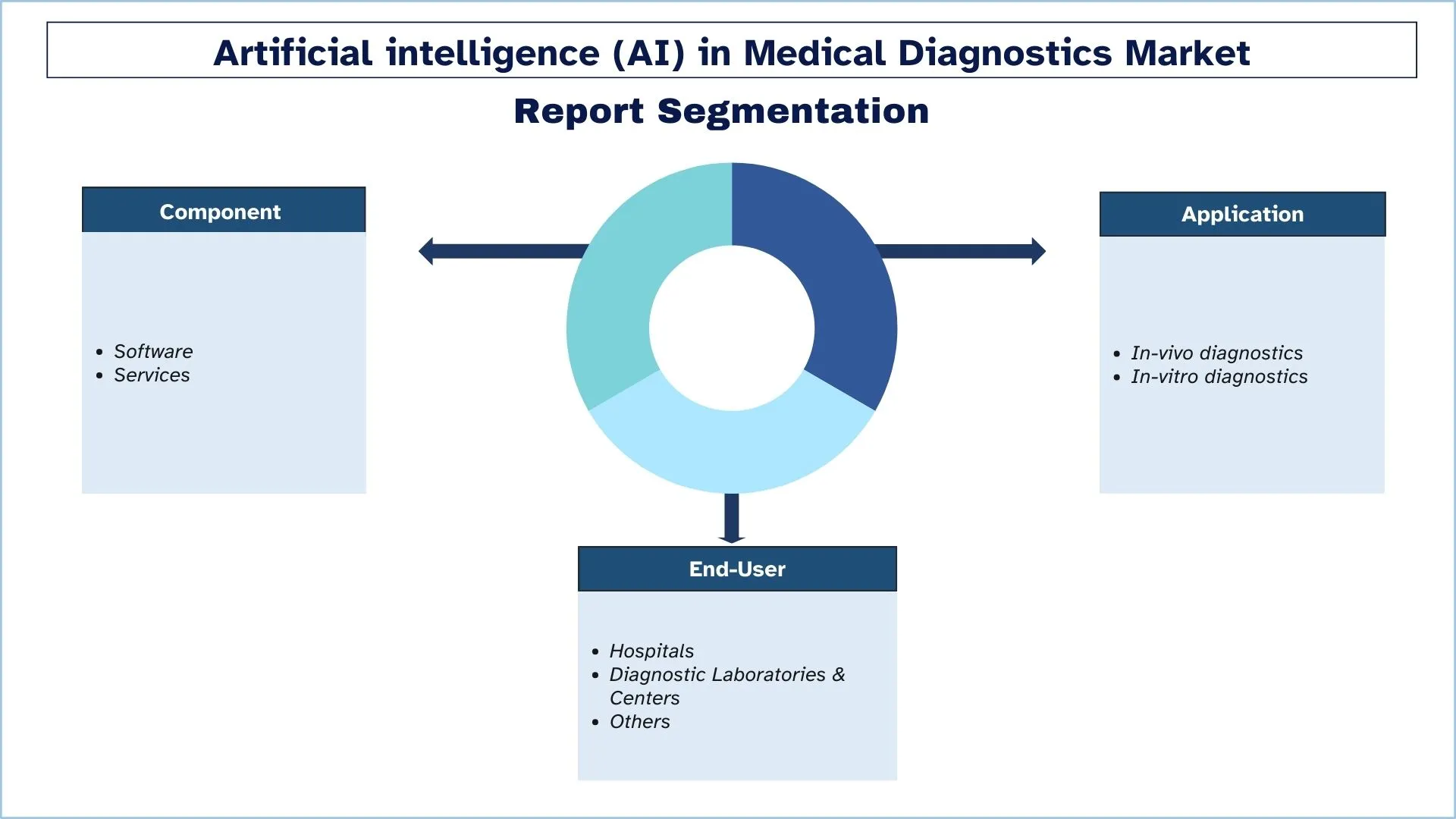
North America has a significant share of the market in 2024.
North America grabbed a significant market share of the global artificial intelligence (AI) in the medical diagnostics market in 2024. It is expected to grow with considerable CAGR during the forecast period. The major factors, such as favorable government initiatives, sophisticated healthcare infrastructure, the presence of a large geriatric population, and the rise in chronic disease incidences across the region, are propelling the growth of this market. For instance, the number of Americans aged 60 and older increased by 34% from 55.7 million to 74.6 million between 2009 and 2019. Also, 133 million Americans, i.e., 45% of the population, have at least one chronic disease. In addition to this, Chronic diseases are responsible for seven out of every 10 deaths in the U.S., killing more than 1.7 million Americans every year.
U.S. Dominates the North American Artificial Intelligence (AI) in Medical Diagnostics Market
AI in the medical diagnostics market in the U.S. is growing at a fast pace due to innovative technology, an increase in the need for early diagnosis, and the availability of large medical data. Most of the medical facilities and tech industries are actively using AI tools in the processes of radiology, pathology, and diagnostic imaging to minimize human errors and improve patient care. The U.S has another added advantage in the following factors: there is a supportive regulatory environment, there is increased healthcare spending, and the nation boasts excellent digital health systems to accommodate the AI diagnostic solutions.
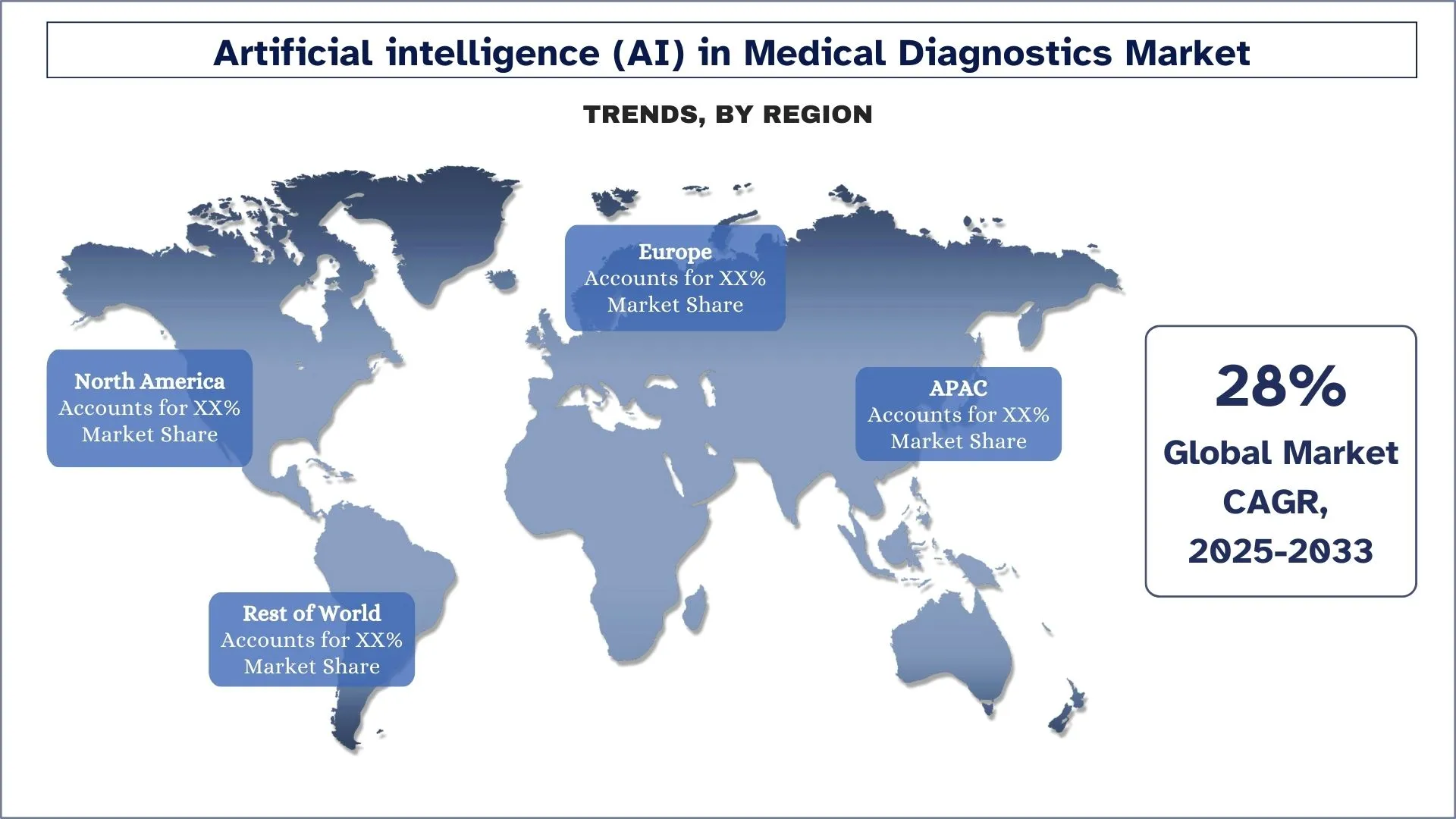
Artificial Intelligence (AI) in the Medical Diagnostics Industry Competitive Landscape
The Artificial Intelligence (AI) in Medical Diagnostics market is competitive, with several global and international players. The key players are adopting different growth strategies to enhance their market presence, such as partnerships, agreements, collaborations, new product launches, geographical expansions, and mergers and acquisitions.
Top Companies in Artificial Intelligence (AI) in Medical Diagnostics
Some of the major players operating in the market are Siemens Healthineers; Zebra Medical Vision Inc. (Nanox Imaging); Riverain Technologies; Vuno Inc.; Aidoc; Neural Analytics (NovaSignal Corp); Imagen Technologies; Digital Diagnostics Inc.; GE Healthcare; and AliveCor Inc.
Recent Developments in Artificial Intelligence (AI) in the Medical Diagnostics Market
In July 2024, AWS and GE HealthCare collaborated to enhance healthcare outcomes by leveraging industry-specific AI foundation models (FMs) and innovative applications. This partnership aims to unlock critical healthcare information, paving the way for advanced wellness solutions.
In October 2023, NeuraSignal acquired NovaSignal, the original developer of the NovaGuide system. This robot-assisted transcranial Doppler (raTCD) system operates without human direction for data acquisition, potentially increasing access to critical data for clinicians to detect right-to-left shunt (RLS).
Artificial Intelligence (AI) in Medical Diagnostics Market Report Coverage
Report Attribute | Details |
Base year | 2024 |
Forecast period | 2025-2033 |
Growth momentum | Accelerate at a CAGR of 28% |
Market size 2024 | USD 1.36 Billion |
Regional analysis | North America, Europe, Asia-Pacific, Rest of the World |
Major contributing region | North America is expected to grow at the highest CAGR during the forecasted period. |
Key countries covered | U.S., Canada, Germany, France, UK, Spain, Italy, China, Japan, and India |
Companies profiled | Siemens Healthineers; Zebra Medical Vision Inc. (Nanox Imaging); Riverain Technologies; Vuno Inc.; Aidoc; Neural Analytics (NovaSignal Corp); Imagen Technologies; Digital Diagnostics Inc.; GE Healthcare; and AliveCor Inc. |
Report Scope | Market Trends, Drivers, and Restraints; Revenue Estimation and Forecast; Segmentation Analysis; Demand and Supply Side Analysis; Competitive Landscape; Company Profiling |
Segments Covered | By Component, By Application, By End-User, By Region/Country |
Reasons to Buy Artificial Intelligence (AI) in Medical Diagnostics Market Report:
The study includes market sizing and forecasting analysis validated by authenticated key industry experts.
The report presents a quick review of overall industry performance at a glance.
The report covers an in-depth analysis of prominent industry peers with a primary focus on key business financials, product portfolios, expansion strategies, and recent developments.
Detailed examination of drivers, restraints, key trends, and opportunities prevailing in the industry.
The study comprehensively covers the market across different segments.
Deep dive regional-level analysis of the industry.
Customization Options:
The global Artificial Intelligence (AI) in Medical Diagnostics market can be customized further as per the requirement or any other market segment. Besides this, UnivDatos understands that you may have your own business needs; hence, feel free to contact us to get a report that completely suits your requirements.
Table of Content
Research Methodology for Artificial Intelligence (AI) in Medical Diagnostics Market Analysis (2023-2033)
We analyzed the historical market, estimated the current market, and forecasted the future market of the global Artificial Intelligence (AI) in Medical Diagnostics market to assess its application in major regions worldwide. We conducted exhaustive secondary research to gather historical market data and estimate the current market size. To validate these insights, we carefully reviewed numerous findings and assumptions. Additionally, we conducted in-depth primary interviews with industry experts across Artificial Intelligence (AI) in Medical Diagnostics value chain. After validating market figures through these interviews, we used top-down and bottom-up approaches to forecast the overall market size. We then employed market breakdown and data triangulation methods to estimate and analyze the market size of industry segments and sub-segments.
Market Engineering
We employed data triangulation techniques to finalize the overall market estimation and derive precise statistical numbers for each segment and sub-segment of the global Artificial Intelligence (AI) in the Medical Diagnostics market. We split the data into several segments and sub-segments by analyzing various parameters and trends, including component, application, end-users, and regions within the global Artificial Intelligence (AI) in the Medical Diagnostics market.
The main objective of the Global Artificial Intelligence (AI) in Medical Diagnostics Market Study is to
The study identifies current and future trends in the global Artificial Intelligence (AI) in Medical Diagnostics market, providing strategic insights for investors. It highlights regional market attractiveness, enabling industry participants to tap into untapped markets and gain a first-mover advantage. Other quantitative goals of the studies include:
Market Size Analysis: Assess the current and forecast market size of the global Artificial Intelligence (AI) in Medical Diagnostics market and its segments in terms of value (USD).
Artificial Intelligence (AI) in Medical Diagnostics Market Segmentation: The study segments the market by component, application, end-users, and region.
Regulatory Framework & Value Chain Analysis: Examine the regulatory framework, value chain, customer behavior, and competitive landscape of Artificial Intelligence (AI) in the Medical Diagnostics industry.
Regional Analysis: Conduct detailed regional analysis for key areas such as Asia Pacific, Europe, North America, and the Rest of the World.
Company Profiles & Growth Strategies: Company profiles of Artificial Intelligence (AI) in the Medical Diagnostics market and the growth strategies adopted by the market leaders to sustain the fast-growing market.
Frequently Asked Questions FAQs
Q1: What is Artificial Intelligence (AI) in the Medical Diagnostics market's current size and growth potential?
The global Artificial Intelligence (AI) in Medical Diagnostics market was valued at USD 1.36 billion in 2024 and is expected to grow at a CAGR of 28% from 2025 to 2033. This rapid expansion is fueled by rising demand for efficient diagnostics and continuous innovations in AI-driven healthcare technologies.
Q2: What are the driving factors for the growth of Artificial Intelligence (AI) in the Medical Diagnostics market?
Key growth drivers include the increasing demand for early and accurate disease detection, growing healthcare digitization, and advancements in deep learning and neural networks. AI significantly improves diagnostic accuracy, speeds up clinical workflows, and supports better patient outcomes.
Q3: Which segment has the largest share of Artificial Intelligence (AI) in the Medical Diagnostics market by component?
The software segment currently holds the largest market share by component segment.
Q4: What are the major trends in Artificial Intelligence (AI) in the Medical Diagnostics market?
Top trends include the integration of multimodal data (imaging, lab results, EHRs), the use of cloud-based diagnostic platforms, and the growing reliance on AI-assisted clinical decision-making. These trends are enhancing personalized care, operational efficiency, and cross-specialty collaboration.
Q5: Which region will dominate the bone sonometer market?
North America is projected to remain the dominant region, driven by robust healthcare infrastructure, early AI adoption, and supportive regulatory frameworks. The U.S. leads with heavy investments in AI research, healthtech startups, and strategic public-private partnerships.
Q6: What are the biggest challenges in the Artificial Intelligence (AI) in Medical Diagnostics market?
Major challenges include data privacy concerns, lack of interoperability, and the complexity of regulatory approvals. Integrating AI across diverse healthcare systems also requires standardization, transparency, and clinician training to ensure scalability and real-world adoption.
Q7: Who are the Top players in the global Artificial Intelligence (AI) in Medical Diagnostics market?
• Siemens Healthineers
• Zebra Medical Vision Inc. (Nanox Imaging)
• Riverain Technologies
• Vuno Inc.
• Aidoc
• Neural Analytics (NovaSignal Corp)
• Imagen Technologies
• Digital Diagnostics Inc.
• GE Healthcare
• AliveCor Inc.
Q8: How is AI transforming early disease detection, and what are the investment opportunities in this space?
AI is transforming early disease detection by enabling rapid, precise analysis of imaging and pathology data. It helps identify diseases like cancer and neurological disorders in early stages, often outperforming traditional diagnostics. This opens new investment avenues in AI diagnostic startups, SaaS platforms, and precision medicine applications, offering high ROI and a chance to lead in digital healthcare innovation.
Q9: What are the major regulatory and data privacy challenges affecting AI adoption in medical diagnostics?
AI in diagnostics must comply with strict regulations like the FDA, EMA, HIPAA, and GDPR. Ensuring clinical validation, transparency, and data security are top concerns. Companies need to adopt ethical AI practices, anonymize patient data, and establish robust compliance frameworks to gain market trust and approval for widespread deployment.
Related Reports
Customers who bought this item also bought


